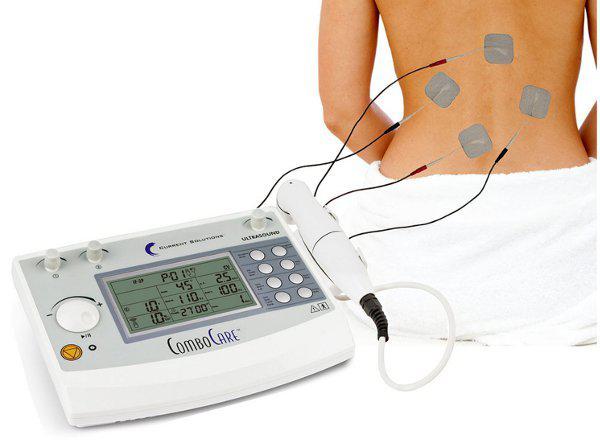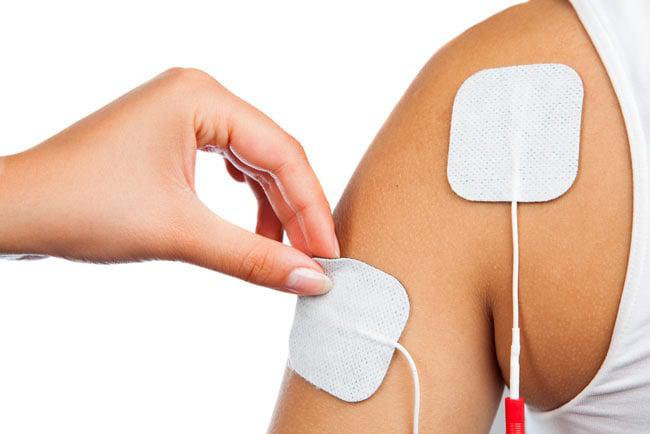The Uses of Electrotherapy in Rehabilitation
Electrotherapy machines are a popular modality used in physical therapy and rehabilitation. Electrotherapy (also known as electrical muscle stimulation or e-stim) uses an electrical machine that delivers electrical impulses to a patient’s body. This stimulation is done in order to promote and facilitate muscle healing and tissue regeneration. Not only is electrotherapy a popular modality in physical therapy, but can also be used by other rehabilitation practitioners because it has several numerous therapeutic benefits.

The use of Electrotherapy has been supported by the American Physical Therapy Association because it has shown to provide the following:
- Relaxation of muscle spasms
- Prevention and cessation of muscular atrophy due to disuse
- Improved local blood circulation and flow
- Re-education of muscles using targeted stimulation
- Preserve and improve range of motion
- Management and reduction of pain (chronic, post-traumatic, and post-surgical acute)
- Prevention of deep vein thrombosis post-surgery
- Facilitation of wound healing
- Improvement in the effectiveness in delivering prescription drugs-electromotive drug administration (EMDA)
How Does Electrical Stimulation Therapy Work?
Electrotherapeutic devices can offer different therapeutic wave forms. An electrical stimulation device includes electrodes that are attached to the treatment area and when activated, the electrical energy of the device causes the muscles to contract. This contraction imitates the body’s natural movement during activity and can prevent muscular atrophy.
The most common wave forms found in electrical stimulation are: TENS,Russian, Interferential, Premodulated, Biphasic, High Voltage and Microcurrent. Each waveform has its own therapeutic benefits, so many devices may offer the practitioner multiple wave forms in order to offer them the most use across diverse patient
Different Wave forms Used in Stimulation Therapy
The various wave forms used in e-stim are designed to target specific areas of the body and to provide customized forms of energy transfer.This variance in energy transfer helps address diverse therapy needs.
Transcutaneous Electrical Neural Stimulator (TENS)
TENS works to decrease pain by blocking pain signals from reaching the brain. The stimulation of TENS also encourages the production of endorphins, making it a popular waveform for treating neck and back pain.
Inter ferential Current (IFC)
Interferential Current (also referred to as IFC) is the waveform to use when treating chronic, post-surgical and post-trauma acute pain. IFC e-stim is non-invasive with minimal side effects. IFC delivers higher frequency energy so it crosses the skin barrier easier for deeper access into areas of pain, but also has improved tolerance.
Biphasic Current
“Biphasic” has two pulses of 2 different intensities. These alternate during treatment which makes it very versatile. Biphasic can be used fo rboth acute and chronic problems for different goals including:
- Strengthening & re-educating muscles
- Improving blood circulation
- Decreasing edema & swelling
High Voltage
High Voltage electrical stimulation is a monophasic waveform which uses polarity (positive or negative) to stimulate the tissue. This is a popular modality to aid in decreasing pain and swelling, reducing muscle spasms and facilitating wound healing.
Microcurrent
Microcurrentis also used for wound healing, utilizing micro-size, pulsing current. Because of its low intensity, microcurrent is the most tolerated waveform in electrotherapy.
How Electrotherapy Can Be Used in Physical Therapy
Used alone or in conjunction with other modalities, such as therapeutic ultrasound, electrotherapy can be used in physical therapy to treat many diverse patient issues including:
- Sciatica
- Fibromyalgia
- Arthritis
- Bursitis
- Post-Surgical Pain & Swelling
- TMD
- Complications associated with Diabetes
- Tennis Elbow
- Carpal Tunnel Syndrome

Scientifically Supported Treatment for Pain & Swelling
Electrotherapyis scientifically supported as being a useful modality to reduce both pain and swelling while improving healing outcomes for diverse patient groups.
Whether treating acute injuries or chronic pain, electrotherapy, with its various wave forms, offer physical therapists the ability to non-invasively treat many diverse patient issues without complications or side effects. With available portable units, electrotherapy can also be used by patients in home and office settings in order to provide them with a therapeutic alternative to traditional oral pain medications. These benefits make electrotherapy one of the most powerful and popular modality in physical therapy.
